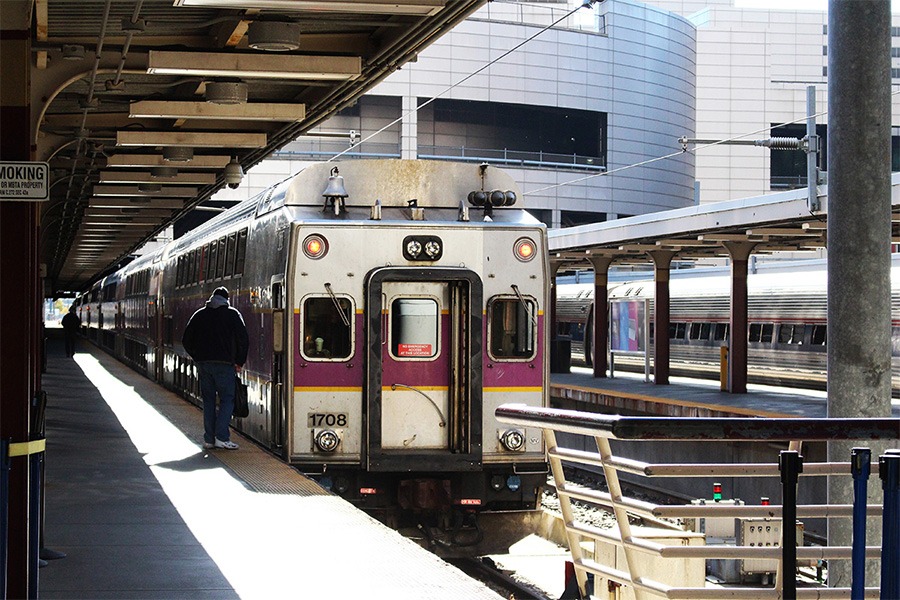The Reimagined Commuter Rail: Electric Cars, Shorter Wait Times, and Better Accessibility
It's an ambitious plan, but it's not totally clear how the whole thing will get funded.

Photo by Margaret Burdge
The highly anticipated North Station/South Station connector tunnel may not have made the cut—but the MBTA’s oversight board voted in favor of several other resolutions to transform the Commuter Rail Monday, taking a first step toward a dramatic, and presumably expensive, overhaul of the system.
The resolutions passed did not outline specific goals, but they painted a broad picture of what the board’s priorities will be in overhauling the rail system, a process that will likely take decades.
The first resolution, which Fiscal and Management Control Board chair Joe Aiello called the project’s vision statement, called for rapid transit with trains arriving every 15 to 20 minutes on the “most dense corridors” of the commuter rail, with less frequent service on less populated lines. It also calls for electrified trains to accelerate service on the Fairmount, Providence/Stoughton, and Newburyport/Rockport lines, high-level platforms to ease boarding, and the integration of the commuter rail into the MBTA’s bus and rail lines to smooth out commutes.
In the resolution, Aiello drew upon six different proposals for commuter rail improvements designed by a designated task force. These six plans ranged from a pretty conservative Option 1, which proposed only higher frequency trains, to a totally transformative Option 6, which proposed 15 minute wait times for trains and total electrification across lines. Several of the biggest projects proposed in the six plans, including the expansion of South Station, the inclusion of service on track that already exists between Allston and Kendall Square, and an underground tunnel between North and South Stations, are noticeably absent from the approved resolutions.
Also missing is the project’s price tag, an omission that has not gone unnoticed by critics. Both Gov. Charlie Baker and Aiello demurred when pressed by reporters yesterday to offer more details on where the funds for the project will come from.
“This is the new Big Dig for the next generation to pay,” Paul Craney of the Massachusetts Fiscal Alliance speculated to the Boston Herald.
The passing of the resolutions does not allocate any funds to the project. However, the initial six proposals for the commuter rail did include estimated costs. The board members say their plans are currently a fusion of plans 5 and 6, which have estimated preliminary capital costs of about $11 billion and $29 billion, respectively.
While she did not outright oppose any of the resolutions, transportation secretary Stephanie Pollack also voiced some concerns about the project’s lack of details.
“We don’t know if we can buy EMUs [“electric multiple units,” the electric cars that would take over the system], how much they would cost, and when they would be delivered,” Pollack pointed out.
She also pushed back on the high-level platform plan, saying that creating these platforms at stations would involve not only raising the concrete but implementing other handicap accessibility measures as well.
However, Aiello is determined to get this time-consuming and potentially costly project rolling, even if it means that there are still questions and details to hash out.
“If we keep studying and studying and studying and don’t commit ourselves to going to implementation, we’ll be here in 20 years again at the same point,” he said.


